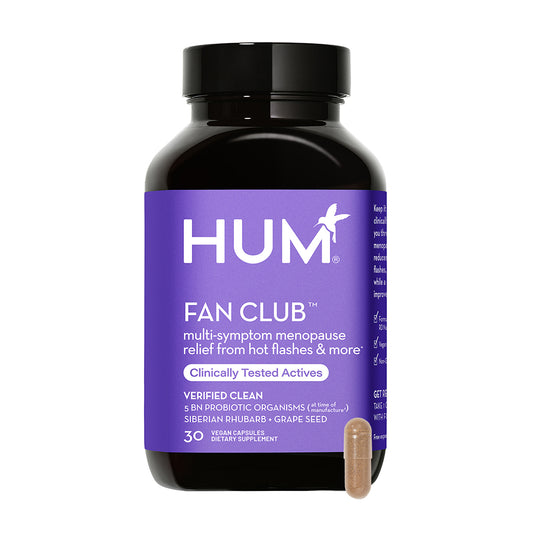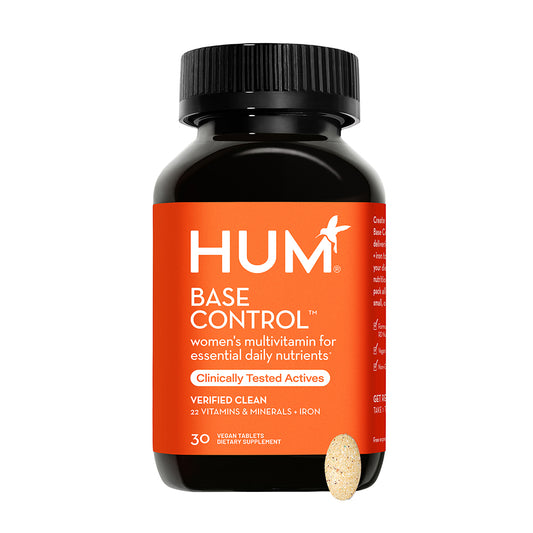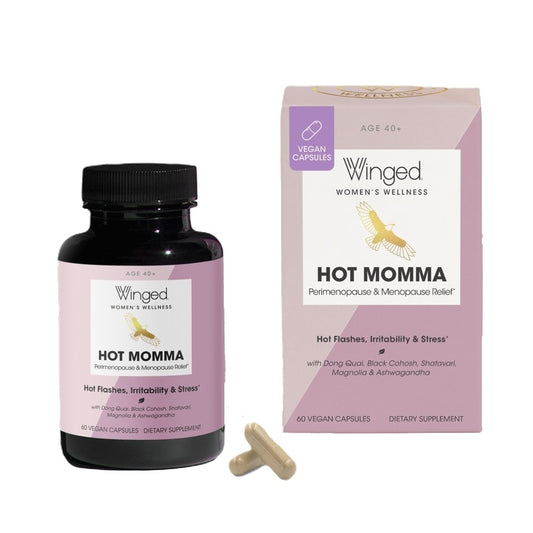Transcript
Jennifer Hanway: Hi, my name is Jennifer Hanway. I'm a holistic nutritionist, certified personal trainer and women's wellness expert. And we're talking all things exercise for menopause.
Ambassador: What types of exercise are best for me during menopause?
Jennifer Hanway: During menopause, you can take part in many different types of exercise, and they're all going to benefit you in their own ways.
The first type of exercise I recommend for people in the menopause transition is strength training. Now as we go through menopause, we start to lose lean muscle mass through a process called sarcopenia. So making sure that we're strength training can be a really great way to hold onto that really important lean muscle mass and to help you feel strong and energized. So I recommend strength training at least three to four times a week.
The next exercise modality I recommend during menopause is walking. Walking is fabulous for our cardiovascular health and for our mood and mental health as well. We want to aim for about 7,000 steps a day.
Next up, when you're feeling energized is HIIT training. HIIT training is a short and sharp way to help your body burn fat and to help you feel more energized. So if you’re pushed for time, HIIT training can be a great option.
And then the last option is mindful exercise. So, think about things like Pilates, yoga, tai chi, getting back in touch with your body and helping your body lower its cortisol levels.
Ambassador: I've noticed I've gained some weight around my midsection during menopause. Can exercise help with this menopause belly?
Jennifer Hanway: If you find that you are gaining weight around the midsection, this can be because your hormones are changing. And as our hormones change, it redistributes where we carry weight on the body.
So one of the best things that we can do for this is to strength train. Strength training is going to boost our metabolism. It builds lean muscle mass, which means that we burn more calories at rest. Strength training also helps us become more insulin sensitive, and the more insulin sensitive we are, the less likely we are to store weight around the belly.
Ambassador: So I know not everyone likes running. Are there any other cardio workouts that are joint friendly?
Jennifer Hanway: Cardiovascular exercise is so important during menopause as we really need to take care of our heart health at this time of our life. But running is absolutely not the only way to do it. A great exercise that I recommend is swimming. It's really gentle on your joints, but it's a great full body exercise. You could also think about cycling, hiking, or even walking at a fast pace. Even dancing is a great form of cardiovascular exercise. It's super fun and it's a great stress relief too.
Ambassador: So I've been hearing more about the benefits of weightlifting during menopause and how it helps reduce bone loss, but I'm still a little intimidated to start. Will it make me bulky? What are the benefits of weightlifting and how might I get started?
Jennifer Hanway: Strength training is one of the best forms of exercise during menopause, and it's essential for both muscular health and for bone health too.
Now, let me put your fears aside. You are not going to build those big bulky muscles because women typically don't have the hormonal makeup to build muscle in that way. What we're thinking about is strong, flexible muscle that's going to help your metabolism and also help with your bone health too.
Bone health is so important at this time of life and strength training can be a really great way of helping us keep and build healthy bones.
Now, if you're feeling intimidated by strength training, there's so many different ways that we can go about it. And if you are feeling intimidated by picking up the weights, you don't need to do that to start with. Start by body weight training: squats, lunges, pushups, press-ups, holding a plank. So start small and work your way up, and it's going to be one of the best things that you can do.
Ambassador: So I can get super stiff in the mornings. Do you think yoga or Pilates could really help me feel more flexible?
Jennifer Hanway: So feeling stiff and inflexible in the mornings is very common during menopause. As our hormones start to change, so does our joint and muscle flexibility, and we can struggle with inflammation at this time as well.
So anything that we can do to help that is going to be a benefit. So that could be yoga, that could be Pilates, that could be tai chi, that could be stretching. And it doesn't have to be in a formal way, just five to 10 minutes before you go to bed. And even stretching in bed before you go to sleep can be beneficial.
Ambassador: So a lot of times I find that I use, “I don't have time” as an excuse, but are there any short bursts of exercise that I can use during my busy workday?
Jennifer Hanway: Finding time to exercise in your schedule can be challenging, but we can find time to exercise. And I like to call this "exercise snacking". On those days that you don't have time to do a half an hour or 45 minutes, or you can't get to the gym, think about what you can do.
How can you add more movement during the day? Can you walk to work instead of driving? Can you take the stairs instead of taking the elevator? Make exercise fit into your schedule and make it fun because it all counts towards your weekly total.
Ambassador: How can I find a menopause exercise routine that I can actually stick with? What strategies can I use in order to stay motivated even on the days when I really don't feel like working out?
Jennifer Hanway: So, my top tips for starting and sticking to an exercise routine — number one is to start small. Instead of thinking you have to work out for an hour a day for seven days a week, think about three days a week for 20 minutes. You're going to be able to stick to that and you can build from there.
Tip number two is to get accountable. Find a friend or a workout buddy to go to the gym with, or even just let a partner or colleague know what you are sticking to.
And number three is find a way to make it fun. Find those exercise modalities that you like. Say to yourself, if you get three times a week in the gym, you'll go to your swimming lesson or you'll go to your dance class. And then if you are in the gym, think about listening to your favorite podcast or your favorite music to make it fun and make the time go more quickly.
Exercise can be a great tool in your menopause toolbox. And here's the thing, you can actually get fitter and stronger at this time in your life than you ever have been before. It's about consistency and it's about celebrating the small wins. Mix it up with strength training, cardiovascular workouts, walking, and mindful movement. And remember that you get to exercise. You don't have to exercise.



